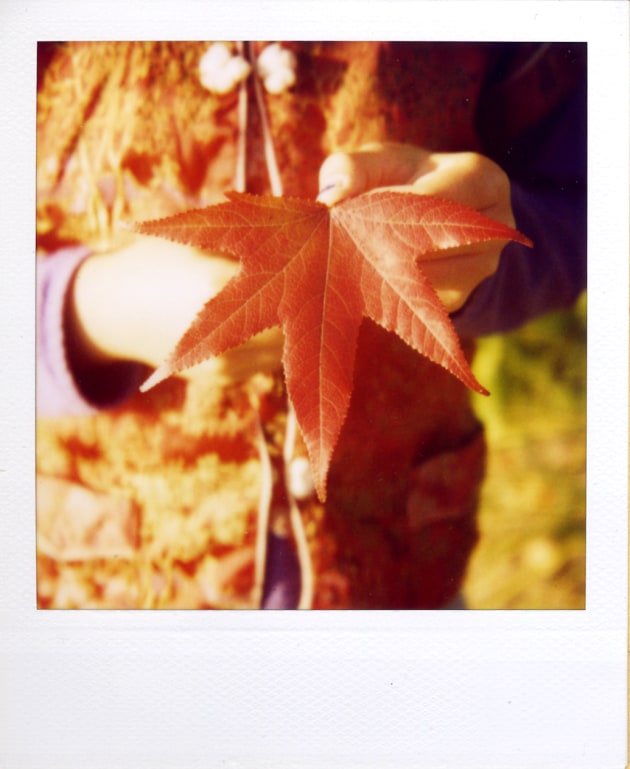How 365 projects can boost your creativity
Dedicating oneself to a single, specific endeavour every day for a full year is a huge undertaking. Sophia Hawkes met five photographers who have successfully completed 365 projects.

Whether you’re at the outset of your career or well-established, your photography can benefit from embarking on a 365 project: any project where you choose to do something every day for 365 days. At the core of each project is the personal journey and development of skills that come with regular practise. Creative endeavours stretching over 365 days quickly captured the attention of photographers and sparked initiatives within the global photographic community when the first projects launched around a decade ago.
One of the most important aspects of these projects is that they tend to foster a deep sense of commitment – both to oneself and one’s photography. They’re all about dedication, regardless of what else is going on in one’s life. But make no mistake, these projects are not easy, and numerous times you’ll have to dig deep to press on.
John Liot, who is based in Jersey in the Channel Islands spent a year working on Danbo 365. For him, the day that stood out the most during the project was the day he truly committed to it. On one occasion, almost deciding to quit, Liot realised that the only person he’d be letting down by not completing the project was himself, because ultimately he was the one that it mattered to most. “I’d taken that important step,” Liot recalls. ”When you commit to something, that’s the point when you’re not going to question yourself.”

For conceptual photographer, Kyle Thompson, based in Portland, Oregon, it was having a strong public following that helped him commit to his project, he feels. “It would have been easier to quit at the beginning when I didn’t have anyone following me,” he says. “Knowing that there were people expecting to see my photo each day would make me feel guilty if I didn’t come through. It became a public act.”
Learning to let go
Logan Zillmer says his 365 project taught him about commitment and dedication to his chosen subject and passion, and to stick with his daily photo until the project was done, no matter what. Some days this had him spending two hours shooting his subject, and five hours editing it, and ending up with an image he wasn’t even happy with. However, one of the crucial lessons he took away from the experience was about letting go of perfection. To complete the project, Zillmer had to stop being afraid of other peoples’ opinions. He used to think that his first project had to be a “brilliant masterpiece” otherwise he wasn’t going to show it to anyone. “This project was entirely about doing something from start to finish, and just putting it out there. It taught me to get out of my own way.”
Thompson came to a similar realisation, and also had to let go of perfection. “To create images that are actually great every day for a year is pretty much impossible,” he says. “Allowing yourself to create and release work you aren’t happy with is important.”

Although, letting go of perfection doesn’t mean you should stop looking for ways to improve. Instead, it opens up a space where you can view and critique your work in order to grow as a photographer. “You could create work a thousand days in a row, and never improve if you don’t try to learn from your mistakes and change,” Thompson says. “Doing a 365 is important because it forces you to create work which you can learn from. You should actively look at the image and decide what you like about it, what you don’t like, and what you would need to change to make it better,” he says. With a 365 project, learning is inevitable.
Why do a 365 project?
One obvious outcome from embarking on a project of this nature is that it will improve your photography. It seems almost impossible that you don’t make a significant improvement. Not only can you expect your style to develop, but your eye as well.
Mark Hirsch, who’s based in Platteville, Wisconsin, is best known for his project and book, That Tree. The project documented the life of a Bur oak tree, and was shot exclusively on his iPhone. That Tree has been featured widely, including by CBS News Sunday Morning, NBC News, NPR, Huffington Post, The Guardian, Le Monde, Chicago Tribune, Denver Post, San Francisco Chronicle, and numerous others.
“I thought I had a pretty good eye,” Hirsch says, “but this project fine-tuned my appreciation for quality of light. It made me comfortable with unusual perspectives and helped me recognise the incredible potential of shooting with only one lens.” Hirsch says that choosing to photograph the same subject every day as he did taught him to see his subject matter with a greater sensitivity and an open-mindedness that he never had before.

Australian Hailey Bartholomew, a director and photographer with a passion for documentary, provides another example of how a 365 will change you creatively. She started her 365 Grateful project having reached a crisis point in her life where she was unable to enjoy it. She was advised by her counsellor to begin a ten day gratitude practice. After completing the ten days, Bartholomew, who at the time was working as a wedding and portrait photographer, saw that there was something amazing about this practice.
Bartholomew’s project saw her taking one Polaroid a day of something she was grateful for, over the course of an entire year. She chose to use Polaroid based on a desire to be “really happy with that moment as it was” without changing it into something better. In this way, Bartholomew’s project activated her mind to be present to, and aware of, her surroundings. “I was hunting through my life as I was living it, always looking for that thing,” she says. Her approach led to her appreciating and shooting photos of things that would otherwise have gone unnoticed. “It gave me the ability to find something beautiful in anything; it was like I awakened to how absolutely amazing the billions shades of green were, or the way the light fell behind a red plant,” she says.
Liot also found that his 365 project made him take notice of things he wouldn’t have considered before. “I’d see a puddle on the floor and think, ‘Great I can do a reflective shot’. I became so much more aware of what was around me.”

For Hirsch, this summoning of the ephemeral and powerful beauty in everyday life was the most valued lesson during his project, That Tree. By committing to photographing the same oak every day for 365 days, he learned to “truly see. With That Tree, I had to learn to see things with a fresh eye every day. . . I became more sensitive to the subtleties.” After nineteen years as a fast-paced photojournalist, Hirsch had plenty of experience. However, That Tree taught him a different way of relating to photography as this story was “much quieter”. A new appreciation for the “subtle elements” in the valley around his subject gently unfolded. “I began to recognise and photograph the relationships of elements in the grassy waterway between the cornfields and the soybean fields, the tiny flowers from a mouse’s perspective with That Tree in the background, the dew drops refracting the shape of That Tree within the tiny water-drop lens. Each day was a new discovery in a place that changed with the seasons and the hour of the day. It was an enlightening lesson, to appreciate simple beauty. I didn’t need to travel around the world in search of incredible beauty.”
Zillmer’s project helped him decide what it was he truly wished to express. “Before the project, I didn’t know yet what kind of a photographer I was or who I wanted to be as an artist, but this project solidified that. It made me very quickly develop a style because it was about creating, and not about thinking,” he says. Zillmer discovered that what he craved was to tell stories. “The surreal conceptualist in me was born out of the love for telling stories,” he explains. The conceptual part was intentional, while the surrealist aspect was unintentional: it came about because this was the “easiest way to tell stories”. Similarly, Hirsch’s project birthed a fresh photographer in him. “Oddly, this project has defined me and changed my career track. It redefined me as a landscape photographer, and artist,” he says.

Career benefits
Embarking on a 365 project can also open up unforeseen career opportunities. Zillmer, for example, was contacted by Converse to shoot one of their ad campaigns after Tumblr, who partnered with Converse, recommended his work to them. It was to be Zillmer’s first “inclination” that he could do commercial work. “My project changed everything,” he says. Before Zillmer’s project was over, he was licensing images for magazines and bands, selling prints, and getting commissions. It really marked the start of his professional career. Zillmer credits this initial success to sharing the work on social media. Similarly, Thompson was studying at university and working as a pizza delivery-driver before his 365 project, which moved his career directly into working full-time as a photographer.
Bartholomew says that her project literary changed her life. A video she made of the project was initially shared by 300,000, and a book has since been published. Meanwhile, Hirsch’s career orbited into new opportunities and national recognition thanks to social and traditional media exposure. To capitalise on this, Hirsch and his publisher decided to create a website “incorporating an e-commerce capability” to presell his book. In just two months, $65,000 of books were pre-sold, and the site continues to provide significant sales of books, prints, and calendars. Since Hirsch’s book came out, he has published two coffee table books for other photographers: Minnesota State of Wonders by Brian Peterson, and Over the Horizon by David Thoreson. That Tree is now also a travelling exhibition and is currently on show in New York.

Overcoming challenges
One surprising finding noted by all the interviewees was that once they had wholeheartedly committed to their projects, they didn’t find it challenging to keep their momentum. Their projects invoked a kind of rapture, and became their obsession, passion, and focus. Bartholomew says that her project “became like magic”, and her biggest challenge was to pick only one thing to photograph per day. While momentum occurred organically, that’s not to say that challenges didn’t need to be overcome. One of the greatest challenges for Zillmer was lack of time given his full-time work schedule. This constraint taught him to let go of perfection.

Liot says that in order to overcome challenges, you need some rules. He believes that setting limitations on what you can and can’t do as part of the project will push you into growing as a photographer. Although rules also “put more weight on your back. Rules will focus you, but difficulties escalate with rules,” he claims.
A 365 project will only succeed if you’re committed. But once you are, these projects will inevitably improve your photography. The regular practise they cultivate will shape you as a photographer, and, maybe even redefine how you express yourself creatively. Additionally, they often invoke an abundance of creativity in the photographer partly due to the fact that they teach one to let go of perfection. So, let go of fear of what others think, and give yourself the opportunity to grow, and allow a 365 project to fuse photography into your everyday life.
Contacts
Hailey Bartholomew
Mark Hirsch
John Liot
Kyle Thompson
Logan Zillmer

Get more stories like this delivered
free to your inbox. Sign up here.

